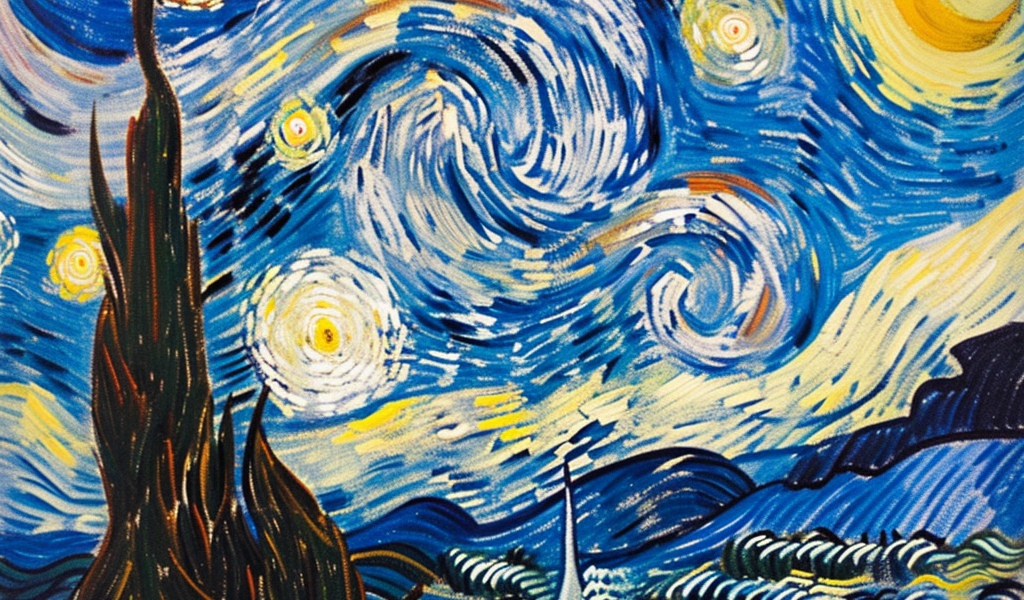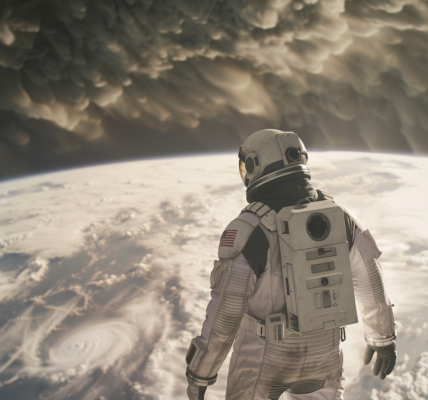Vincent van Gogh’s iconic painting, “The Starry Night,” has long been celebrated not only for its emotional depth but also for its captivating visual dynamics. Now, a groundbreaking study led by physicists from China and France reveals that the swirling structures within the artwork may reflect a sophisticated understanding of turbulent flow, a complex phenomenon seen in various natural settings.
Created in 1889 while van Gogh was staying at an asylum in Saint-Rémy-de-Provence, France, “The Starry Night” captures a scene just before dawn, viewed from the window of his room. The painting is characterized by its vibrant colors and dynamic brushwork, which many art historians have interpreted as a reflection of van Gogh’s turbulent mental state during this period of his life.
In their recent analysis published in the journal Physics of Fluids, the research team, led by Yongxiang Huang from Xiamen University, sought to explore whether van Gogh had an innate grasp of the mathematical principles underlying turbulent flow. Turbulent flow is a natural occurrence in various mediums such as water, air, and even blood, characterized by chaotic and irregular movements that can seem random yet are governed by specific physical laws.
Huang explained, “Imagine standing on a bridge and watching the river flow. You see swirls forming on the surface. These swirls are not random; they organize into distinct patterns that can be predicted through physical laws.” This concept of predictability amid chaos is central to understanding turbulence.
The researchers focused on the 14 prominent whirls or eddies depicted in van Gogh’s masterpiece. Using a high-resolution digital image of the painting, they meticulously analyzed the sizes and shapes of these swirling forms, comparing them to theoretical models of turbulent flow. This involved measuring the brushstrokes and examining how the variations in brightness and color corresponded to the energy transfer processes observed in turbulent systems.
The study’s findings revealed a remarkable correlation between the sizes of the 14 whirls in “The Starry Night” and the mathematical scales predicted by turbulence theory. The researchers noted that the energy transfer from larger eddies to smaller ones, a fundamental aspect of turbulent flow, was mirrored in the patterns of van Gogh’s brushwork.
This intersection of art and science not only provides insight into van Gogh’s creative process but also highlights the potential for artists to intuitively engage with complex scientific concepts. The study suggests that van Gogh’s artistic choices may have been influenced by a subconscious understanding of the turbulent phenomena he observed in nature.
As art and science continue to intersect in fascinating ways, this research opens up new avenues for exploring the connections between human creativity and the natural world. The implications of understanding turbulence through the lens of art extend beyond van Gogh’s work, inviting further exploration into how visual representation can reflect underlying scientific principles.
In a world where the boundaries between disciplines are increasingly blurred, the study of “The Starry Night” serves as a reminder of the profound relationship between artistic expression and scientific inquiry. As researchers delve deeper into the intricacies of turbulence and its representation in art, they continue to uncover layers of meaning that enrich both fields.
As we reflect on van Gogh’s legacy, it becomes evident that his contributions extend far beyond the realm of art, inviting us to consider the intricate connections that bind creativity and scientific understanding. The swirling skies of “The Starry Night” may not only represent the artist’s emotional turmoil but also embody a profound exploration of the natural world, captured through the lens of one of history’s most celebrated painters.





